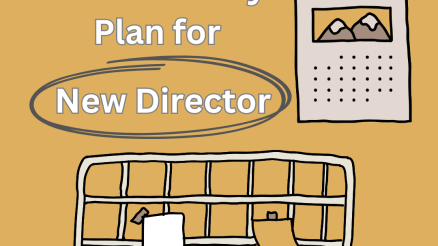Imagine your project as a symphony, and stakeholders as the diverse instruments that, when harmonized, produce a masterpiece.
In simpler terms, stakeholder analysis is the compass guiding your construction journey.
Whether you’re a seasoned project manager or a newcomer to the construction scene, understanding and mastering this concept is your ticket to smoother operations and satisfied clients.
In this blog post, you will learn about stakeholder analysis for construction project, its importance and also one example is also explained the concept.
Let’s learn more about it.
What is stakeholder Analysis?
Stakeholder analysis is a strategic process used in project management to identify, understand, and assess the interests, expectations, and influence of individuals, groups, or organizations that can affect or be affected by a project.
In the context of construction projects, stakeholders can include a wide range of entities, such as project teams, clients, investors, regulatory bodies, local communities, and more.
The primary goal of stakeholder analysis is to gain insights into the dynamics and relationships among these stakeholders, enabling project managers to make informed decisions and develop effective strategies for engagement.
Importance of Stakeholder Analysis for Construction Project
Stakeholder analysis holds paramount importance in construction projects for a myriad of reasons, acting as the compass that navigates the project from initiation to completion.
Here are key aspects underscoring its significance:
Identification of Key Players
Stakeholder analysis ensures the comprehensive identification of all parties involved, both internally (project team, executives) and externally (clients, regulatory bodies, local communities). This broad perspective helps in understanding the intricate web of relationships shaping the project environment.
Prioritization for Strategic Focus
Not all stakeholders have the same level of influence or interest. Through stakeholder analysis, it becomes possible to prioritize stakeholders based on criteria such as power, interest, or potential impact on the project. This prioritization allows for a targeted and strategic approach to engagement efforts.
Informed Decision-Making
A deep understanding of stakeholder interests, expectations, and concerns equips project managers with the knowledge needed for sound decision-making. Informed decisions contribute to the project’s overall success and can prevent issues that may arise due to misalignment with stakeholder needs.
Effective Communication
Stakeholder analysis lays the groundwork for tailored communication strategies. By knowing how and when to engage with different stakeholders, project teams can foster transparent and effective communication channels. This, in turn, mitigates the risk of misunderstandings, conflicts, and unmet expectations.
Risk Mitigation and Issue Resolution
Anticipating potential challenges is a hallmark of effective project management. Through stakeholder analysis, project teams can identify risks and issues early on, allowing for proactive measures to be taken. This foresight minimizes the impact of unforeseen complications on the project’s timeline and budget.
Enhanced Project Outcomes
Ultimately, successful construction projects are not just about bricks and mortar; they are about meeting or exceeding stakeholder expectations. Stakeholder analysis contributes to project success by aligning deliverables with stakeholder needs, leading to higher client satisfaction and positive project outcomes.
Process of Stakeholder Analysis for Construction Project
Following are important three steps of conducting stakeholder analysis for construction project:
Step 1: Identification of Stakeholders
Identification of stakeholders is crucial because stakeholders who can significantly impact or be affected by the construction project should be known. This step lays the foundation for understanding the project’s ecosystem. Here, we delve into the methods for identifying both internal and external stakeholders:
Internal Stakeholder Identification Methods
a. Project Team Assessment:
Start by assessing the project team itself. Identify individuals who play key roles in the project, such as project managers, team leads, engineers, and other internal contributors. They are instrumental in project success and often have a direct influence on project outcomes.
b. Organizational Charts and Hierarchies:
Reviewing organizational charts and hierarchies provides a structured approach to identifying internal stakeholders. This method helps to understand reporting relationships, lines of authority, and key decision-makers within the organization.
c. Review Project Documents:
Analyzing project documents, such as project plans, proposals, and team directories, can reveal additional internal stakeholders. Look for names and roles mentioned in these documents to ensure a comprehensive list.
d. Stakeholder Workshops or Brainstorming Sessions:
Conducting workshops or brainstorming sessions with the project team can yield valuable insights. Team members can collectively identify internal stakeholders based on their knowledge and experience.
External Stakeholder Identification Methods:
a. Document Analysis
Similar to internal stakeholders, external stakeholders can be identified through document analysis. Review project documents, contracts, and agreements to identify external entities, such as clients, suppliers, and regulatory bodies.
b. Industry Research
Conduct industry research to identify external stakeholders that commonly interact with construction projects in a specific location or sector. This can include government agencies, local communities, environmental organizations, and more.
c. Consultation with Experts
Engage with industry experts, consultants, or professionals who have experience in similar construction projects. Their insights can help identify external stakeholders that may have been overlooked.
d. Community Engagement
For construction projects with a significant impact on local communities, it’s crucial to engage with those communities directly. Conducting public forums, surveys, or meetings can help identify external stakeholders and understand their concerns.
e. Legal and Regulatory Review
Examine legal and regulatory requirements applicable to the project. Identify external stakeholders mandated by laws and regulations, such as environmental agencies, planning authorities, or health and safety regulators.
Step 2: Prioritization of Stakeholders
Prioritization means that identified stakeholders are ranked based on their level of influence, interest, or other relevant criteria. Prioritizing stakeholders helps focus resources and attention on those who have a significant impact on the project. Here are the key components of this step:
Criteria for Prioritizing Stakeholders
a. Influence
Evaluate the level of influence each stakeholder has on the project. Stakeholders with higher influence may have the ability to make or break key decisions, impacting the project’s success.
b. Interest
Assess the stakeholders’ level of interest in the project. Those with high interest are likely to closely follow and be affected by project developments, making their engagement crucial.
c. Impact on Project Objectives
Consider how each stakeholder’s actions or decisions may impact the achievement of project objectives. Stakeholders whose interests align with project success or failure should be given priority.
d. Dependency on the Project:
Identify stakeholders who are dependent on the project for their own success or well-being. Their dependency can influence their level of engagement and interest in project outcomes.
e. Urgency of Engagement
Evaluate the urgency of engaging with each stakeholder. Some stakeholders may require immediate attention due to their influence or the critical nature of their involvement in the project.
f. Attitude and Support:
Consider the stakeholders’ attitudes and support toward the project. Supportive stakeholders can be advocates, while those with negative attitudes may pose challenges that need to be addressed proactively.
Tools and Techniques for Prioritization:
a. Power/Interest Grid
Plot stakeholders on a Power/Interest grid, categorizing them into quadrants based on their influence and interest. This visual representation helps identify key stakeholders who require focused engagement.
b. Influence/Impact Grid
Similar to the Power/Interest grid, the Influence/Impact grid assesses stakeholders based on their influence and the potential impact of their actions. This aids in prioritizing stakeholders for strategic engagement.
c. Salience Model
The Salience Model considers three factors: power, urgency, and legitimacy. By evaluating stakeholders against these criteria, it helps prioritize them based on their importance to the project.
d. Stakeholder Interviews and Surveys
Direct engagement with stakeholders through interviews or surveys allows for a more qualitative assessment of their priorities and concerns. This firsthand information can be valuable in the prioritization process.
e. Stakeholder Analysis Software
Utilize specialized software tools designed for stakeholder analysis. These tools often provide features for ranking and prioritizing stakeholders based on various criteria, streamlining the process.
f. Expert Judgment
Seek input from subject matter experts or experienced project managers. Their insights and experience can provide valuable perspectives on which stakeholders should be prioritized for effective project management.
Step 3: Analysis of Stakeholders
Stakeholder analysis process involves a comprehensive analysis of stakeholders. This step goes beyond identification and prioritization, delving into a deeper understanding of stakeholder dynamics.
Here are the key components of this analysis:
Understanding Stakeholder Interests:
Direct Communication
Initiate direct communication with stakeholders through interviews, surveys, or meetings. This allows project teams to gain insights into the stakeholders’ goals, motivations, and expectations related to the project.
Review of Public Statements
Examine public statements, press releases, or official communications from stakeholders. This can provide clues about their interests, concerns, and overall stance regarding the project.
Analysis of Past Interactions:
Reflect on past interactions and engagements with stakeholders. Assess how they have responded to similar projects or issues in the past to understand recurring themes in their interests.
Assessing Stakeholder Influence and Power:
Power Mapping:
Create a power map to visually represent the influence and power dynamics among stakeholders. Identify those with decision-making authority, financial control, or significant sway over project outcomes.
Network Analysis
Analyze the network of relationships among stakeholders. Identify central figures or groups with strong connections, as they may hold considerable influence over the project.
Expert Opinions
Seek input from industry experts, internal team members, or individuals with experience in similar projects. Their insights can help assess the perceived influence and power of different stakeholders.
Stakeholder Workshops
Conduct workshops or focus groups with key stakeholders to explore their expectations and concerns. Encourage open dialogue to uncover both positive and negative aspects that might impact the project.
Document Review
Scrutinize relevant documents, contracts, and agreements to identify specific expectations and concerns outlined by stakeholders. This ensures alignment with contractual obligations and regulatory requirements.
Issue and Risk Analysis
Anticipate potential issues and risks that may arise from stakeholders’ expectations or concerns. Develop strategies to address these proactively to minimize negative impacts on the project.
Continuous Engagement
Maintain an ongoing dialogue with stakeholders throughout the project lifecycle. Regularly revisit their expectations and concerns to ensure alignment and adapt strategies as needed.
Tools and Techniques for Stakeholder Analysis
Incorporating these tools and techniques into stakeholder analysis enhances the project team’s ability to navigate the complex landscape of relationships and interests.
The combination of qualitative and quantitative approaches, along with technological advancements, ensures a more robust and comprehensive understanding of stakeholders in construction projects.
Tools and techniques are instrumental in conducting effective stakeholder analysis, providing structured approaches to understand and manage the complexities of stakeholder dynamics. Here’s an overview of key tools and techniques:
A. Stakeholder Mapping:
Power/Interest Grid
Description: This grid categorizes stakeholders based on their level of power and interest in the project. It helps identify key players who require focused management.
Application: Use the grid to prioritize stakeholders, placing them in quadrants such as ‘High Power/High Interest’ or ‘Low Power/Low Interest.’
Influence/Impact Grid
Description: Similar to the Power/Interest grid, this tool assesses stakeholders based on their influence and the potential impact of their actions on the project.
Application: Use the grid to identify critical stakeholders who may significantly influence project outcomes.
B. SWOT Analysis for Stakeholders:
Description: Adapted from the business strategy tool, SWOT analysis (Strengths, Weaknesses, Opportunities, Threats) is applied to stakeholders. It evaluates their internal and external factors.
Application: Identify stakeholders’ strengths (positive attributes), weaknesses (areas of concern), opportunities (potential positive contributions), and threats (risks they pose to the project).
C. Stakeholder Interviews and Surveys:
Description: Direct engagement with stakeholders through interviews or surveys to gather qualitative information about their perspectives, expectations, and concerns.
Application: Use insights gained to enrich stakeholder profiles, validate assumptions, and uncover nuanced details not apparent through quantitative methods.
D. Technology in Stakeholder Analysis:
Description: Leveraging various technologies and software tools to streamline the stakeholder analysis process, enhance data management, and facilitate communication.
Application: Explore specialized stakeholder management software, project management tools, and communication platforms to organize, analyze, and communicate with stakeholders efficiently.
Benefits:
Data Centralization: Use technology to centralize stakeholder information, ensuring that the entire project team has access to the most up-to-date data.
Communication Platforms: Utilize collaboration tools and communication platforms to foster engagement and keep stakeholders informed throughout the project lifecycle.
Analytical Tools: Employ data analytics and visualization tools to derive meaningful insights from stakeholder information, aiding in decision-making.
Stakeholder Analysis for Construction Project Example
Let’s consider a hypothetical construction project—an urban redevelopment initiative aimed at revitalizing an old industrial area into a mixed-use space comprising residential, commercial, and recreational facilities. Conducting a stakeholder analysis for this project involves identifying, prioritizing, and analyzing the key stakeholders involved.
1. Stakeholder Identification:
Internal Stakeholders:
- Project Manager and Project Team
- Executives and Decision-Makers within the Construction Company
- Architects and Engineers
External Stakeholders:
- Local Residents and Community Associations
- Local Businesses and Chamber of Commerce
- City Planning Department and Regulatory Authorities
- Environmental Groups
- Investors and Financial Institutions
- Utility Service Providers (Water, Electricity, etc.)
2. Prioritization:
Criteria for Prioritization:
- Influence/Power: City Planning Department, Investors, Project Team
- Interest: Local Residents, Local Businesses, Environmental Groups
- Impact on Project Objectives: Regulatory Authorities, Investors, Local Residents
Tools and Techniques:
- Power/Interest Grid: City Planning Department falls in the “High Power/High Interest” quadrant.
- Influence/Impact Grid: Investors are identified as having high influence and a significant impact.
3. Analysis:
Understanding Stakeholder Interests:
- Local Residents: Interested in preserving the area’s character, minimizing disruptions during construction.
- Investors: Interested in a timely and profitable project completion.
Assessing Stakeholder Influence and Power:
- City Planning Department: High influence due to regulatory authority.
- Environmental Groups: Moderate influence, but potentially high power if environmental concerns are not addressed.
Evaluating Stakeholder Expectations and Concerns:
- Local Businesses: Expect increased foot traffic and economic growth. Concerned about potential disruptions during construction.
- Investors: Expect a return on investment. Concerned about project delays and unforeseen challenges.
4. Stakeholder Mapping:
Power/Interest Grid: City Planning Department, Investors, and Local Residents are in the “Manage Closely” category.
Final Words
Stakeholder analysis is like the magic wand of construction projects, making sure everything comes together perfectly. From big-shot city planners to the folks who call the neighborhood home, every person involved has a part to play. By figuring out what everyone wants and worries about, we set the stage for a construction success story. So, cheers to stakeholder analysis – the behind-the-scenes trick that turns plans into real neighborhoods and projects into something we can all be proud of.



